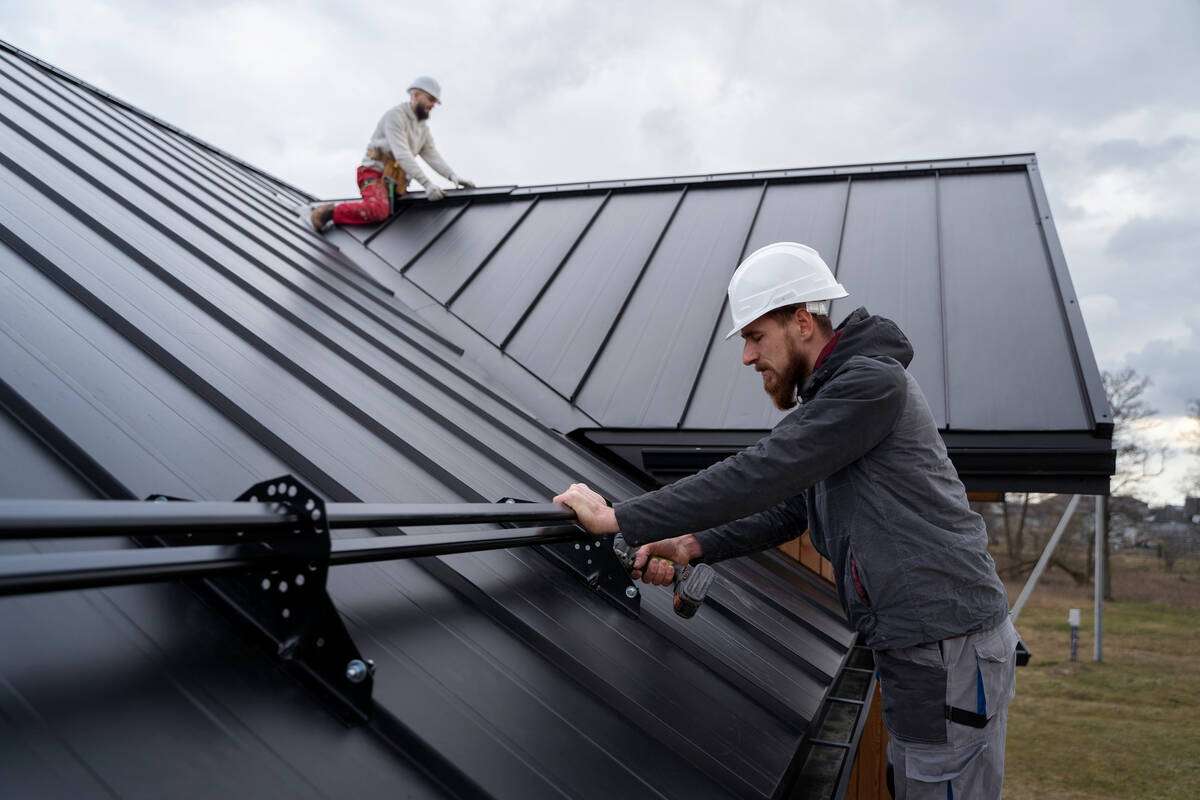Choosing the right size for your barndominium starts with understanding your personal needs, lifestyle, budget, and available land. These structures are valued for their flexibility, offering a mix of living space and functional areas like workshops, garages, or studios. That makes them ideal for families, remote workers, hobbyists, or anyone who wants to combine comfort with utility. Whether you’re planning a cozy two-bedroom home or a larger setup with extra storage or creative space, the size should reflect how you intend to use it day-to-day. It’s also important to consider future needs like growing families or new hobbies. This article explores what makes a barndominium size feel just right and provides helpful guidance to make your planning process smoother and more efficient.
Choosing the Right Barndominium Size for Your Needs
Barndominiums can vary widely in size, typically ranging from about 1,000 square feet to over 3,000 square feet. The ideal square footage depends largely on how the space will be used and the lifestyle of the people living in it. What feels like the right size to one person might be too small or too large for someone else.
When planning the size of a barndominium, it’s important to think about a few essential factors. These elements can help guide your decision and ensure the final layout fits your day-to-day living:
Defining the Main Purpose
Start by identifying how the space will be used. Will it be your main home, a vacation getaway, a work area, or a mix of all three? The way you plan to use the barndominium shapes how much room you’ll need. Living areas, storage, and workspaces all call for different amounts of square footage.
Household Size
The number of people who will live there plays a big role in determining size. A larger family usually needs more bedrooms, bathrooms, and shared living areas. Plan for enough space so that everyone is comfortable on a daily basis.
Personal Habits and Needs
Think about how you live and what features matter to you. If you like having people over, a roomy kitchen and dining space might be important. If you have hobbies or special interests, you may want to add a workshop or studio.
Planning for the Future
Consider how your needs might change. If your family grows or you decide to work from home, extra space will come in handy. Building with room to expand or choosing a slightly larger layout from the start can prevent expensive changes down the road.
Budget Considerations
What you can afford will naturally shape your decisions. Bigger buildings cost more for materials, labor, and utilities over time. Setting a clear budget at the start helps you figure out how much space you can realistically include.
Property Size and Restrictions
Take your land into account when finalizing the size. Rules around zoning, local building codes, and the land’s natural layout—like slope or soil conditions—can all affect where and how big you can build.
Architectural Style and Visual Preferences
The style and design you’re drawn to can affect how much space you need. Open layouts, vaulted ceilings, or expansive windows usually require more square footage to create the look and atmosphere you’re going for.
Energy Use and Efficiency
The bigger the structure, the more effort it takes to heat and cool. If saving on energy bills is important, think about downsizing the layout or adding smart design features that help manage temperature and reduce energy use.
Future Resale Possibilities
If you plan to sell down the road, think about how the size and design might be received by potential buyers. A large, fully customized space might suit your lifestyle, but could limit your options when it’s time to list the property.
Zoning and Building Guidelines
Before finalizing any plans, check with local building departments. Some areas have rules about how much land a structure can cover or the total square footage allowed, which can directly impact your building plans.
Storage and Organization Needs
Assess how much space you’ll need for storing tools, gear, seasonal items, or vehicles. Planning ahead for storage helps keep your living spaces neat and avoids unnecessary clutter.
Use of Outdoor Areas
If outdoor living matters to you, think about how much of your land should be set aside for patios, gardens, or other exterior features. These preferences can shape the overall floor plan and property layout.
When you weigh all these factors together, you’re better equipped to choose a barndominium size that fits your lifestyle, supports future flexibility, and stays within your budget.
Ideal Size Ranges
Small Spaces (1,000 to 1,600 square feet)
A smaller barndominium works well for individuals or couples looking for a manageable and affordable home. This size typically fits one to two bedrooms, a couple of bathrooms, and a cozy living area with an efficient kitchen layout. These compact homes are easy to maintain and cost-effective to build.
Mid-Range Options (1,600 to 2,500 square feet)
This size range is a great match for growing families or homeowners wanting a bit more flexibility. It usually supports two to three bedrooms, several bathrooms, and more spacious common areas. There’s also enough square footage for extras like a small workshop, office, or creative studio.
Larger Layouts (2,500 to over 4,000 square feet)
For those needing more space, a larger barndominium offers plenty of room to live and work comfortably. These layouts often feature three to four bedrooms, multiple bathrooms, large living and dining spaces, and extra room for garages, workshops, or recreational areas.
Finding the Right Barndominium Size for Your Lifestyle
Although barndominiums are still relatively new to the market, trends in traditional home sizes help offer a useful reference. Based on the U.S. Census Bureau’s 2019 Characteristics of New Housing, the average new single-family home was about 2,322 square feet. This suggests that barndominiums in the medium range, typically between 1,600 and 2,500 square feet, can meet the general space needs of most American households. For anyone exploring barndominium living, this range serves as a strong starting point when thinking about how much room may be necessary.
A practical barndominium size considers both personal preferences and factors like cost and available land. For those interested in combining living and work areas under one roof, the medium size category often offers the right amount of flexibility without becoming difficult to maintain. At the end of the day, the ideal space is one that matches your daily routines and long-term plans, making life inside feel comfortable and efficient. As steel-frame barndominiums gain more attention, their ability to adapt to different layouts means they can work for many types of homeowners. No matter the square footage, these structures continue to appeal to a growing and varied group of people.
The Future of Barndominiums: Smarter Designs and Stronger Materials
Barndominiums have come a long way from their early roots as simple barn-style homes. Today, they’re known as flexible, stylish living spaces that appeal to a wide range of people. This shift highlights how barndominiums have grown in popularity and suggests they’ll remain a strong choice in modern home design. Looking forward, key trends like the growing interest in steel frame barndominium kits show that these homes are headed toward even more innovation. This article looks at the latest directions in barndominium design and construction, while offering insight into how new technology and lifestyle changes are likely to influence their future through 2024 and beyond.
Why Steel Frame Barndominium Kits Are Gaining Popularity
More homeowners are turning to steel-frame barndominium kits as a smart alternative to traditional wood or concrete builds. This rising trend comes from the clear benefits steel brings—lasting durability, natural resistance to pests, and strong protection against moisture and rot. Companies like Prestige Steel Structures are making steel construction more accessible by offering pre-designed kits that are simple to put together and designed to match a variety of styles and needs.
Steel barndominiums stand out for their ability to endure severe weather, which makes them a reliable choice in many different climates. Their efficient construction also helps reduce material waste and shortens build times, making them attractive to anyone looking for a faster, cleaner, and more environmentally conscious way to build.
Conclusion
Choosing the right size for your barndominium is all about aligning space with how you live today and how your needs might shift tomorrow. Whether you prefer something compact and easy to maintain or a larger layout with extra room to grow, there’s no one-size-fits-all answer. What matters most is balancing your lifestyle, future plans, property size, and budget. By thinking ahead and being honest about what you truly need, you can design a home that feels just right. With flexible layouts and evolving materials like steel frames, today’s barndominium can offer the strength and efficiency of a modern metal building. As this housing style continues to gain popularity, homeowners have more tools than ever to create a space that blends function, comfort, and long-term value.
FAQs
How do I figure out how much space I need in a barndominium?
Start by thinking about your daily routines, family size, and any future plans like a growing family or working from home. If you like open spaces or plan to entertain often, you’ll likely want more square footage. If you prefer a cozy, low-maintenance home, a smaller layout might be the better fit.
What size barndominium do most people choose?
Most homeowners gravitate toward popular sizes like 30×40 or 40×60. These options typically offer enough space for living areas, bedrooms, and even a garage or workshop without feeling overwhelming.
How does barndominium size affect the overall cost?
Larger spaces require more materials, labor, and utilities, so the size you choose directly impacts your budget. Keep in mind that going too big can lead to unused space, while too small might limit your comfort or future flexibility.
Should I build in space for a shop, garage, or extra rooms?
If you think you’ll need a shop, storage area, or guest suite later, it’s usually smarter to include them in the initial build. Adding square footage up front can save you the hassle and expense of future expansions.
Can I make a smaller barndominium feel roomy and open?
Yes, with smart design choices like open floor plans, tall ceilings, and natural light, you can make a compact space feel much larger. Thoughtful layouts make a big difference in how spacious your home feels, even with a smaller footprint.





